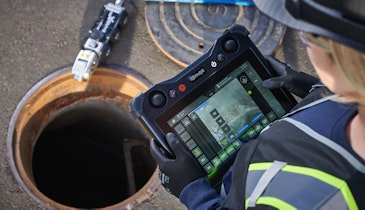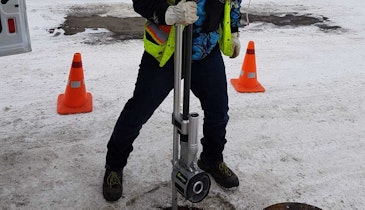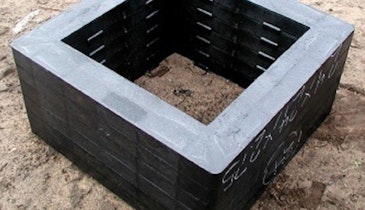The city of Wichita (Kansas) Stormwater Utility Division was struggling to efficiently assess its collection system and combat problems like pipe defects and inflow and infiltration with its singular CCTV van. Inspecting the city’s 1,400 miles of storm conduit is no small task, and in 2018, it was estimated it would take the division 40 years to complete the full system assessment.
Darrin Deutscher, general supervisor II for the division, wasn’t sure how to increase efficiency. But it was clear that the team needed to consider other options.
The solution
Deutscher credits John “Red” Phillips, another general supervisor II in the division, with finding the next step forward.
“He reached out to Key Equipment, and Nate Miller turned him on to the Quickview airHD zoom assessment camera and brought one around for testing,” Deutscher says. “The price point was right, and we got four of them for less than another CCTV system.”
The results
The team started to see results immediately. With Quickview, the division can get eyes underground, fast. Determining sources of I&I, corroded pipe in need of repair, and more is now finally within its grasp.
“Honestly, we were surprised how much it instantly changed the way we go about business, for the good,” says Deutscher. “Now, instead of CCTV’ing everything, we use these zoom cameras.”
With Quickview in their corner, Deutscher expects the entire system assessment to take around five years — just a fraction of the previous estimate. And adding Quickview to the mix has transformed how the cleaning and repair functions of the division operate.
“Before, the crew would go out and televise every line in a mile section,” Deutscher says. “We’d just work our way across the city, to the center. And we’d get pulled off for emergency stuff . . . Now we can use Quickview to look down a line, and sometimes we bring the crawler, but most of the time we can get away without it.”
Better use of resources
Quickview has also enabled the city to better utilize its available resources. “We have five cleaning crews. Those trucks used to go out to a section of town and run every line, because you couldn’t tell if they were dirty or not. Now we do about a third of the cleaning — only the ones that need it,” says Deutscher.
The cleaning crews can also use the inspection footage to make smarter decisions about how they tackle dirty lines. Video collected with Quickview is transferred via Wi-Fi to WinCan Web, which syncs effortlessly with the city’s CentralSquare asset management system. That connection is all-important, says Deutscher.
“The video is actually in the system. I can go into any asset that’s had it done, and anyone else can, too. [The crew] can look before they go in to clean to pick the right nozzle.”
Quickview is a versatile tool, and it has come in handy for projects that fall outside of routine workflows, such as emergency callouts during storms. Spring downpours in the Midwest can create big problems fast when collection systems fail.
“We had a rainstorm, and a line was clogged up,” recalls Deutscher. “They worked for seven hours but couldn’t get through it. One of the guys took the pole cam downstream and saw a massive 30-foot root ball. We had to excavate. Without Quickview, we would have been guessing. This made it instantaneous.”
Envirosight designs equipment to serve the needs of municipalities, contractors, departments of transportation and civil/environmental engineers. Envirosight is a full-service manufacturer of robotic sewer inspection crawlers, zoom cameras, push cameras, inspection reporting and asset management software, and inspection vehicles.
866-838-3763 | www.envirosight.com | mail@envirosight.com





